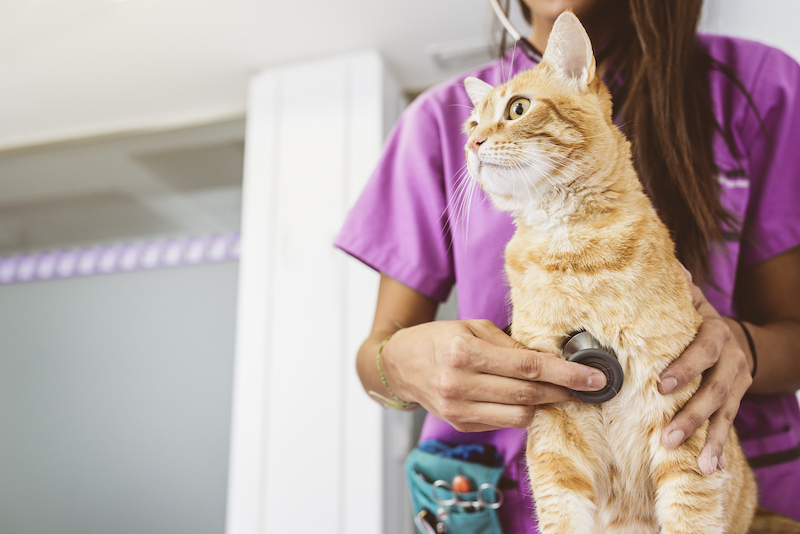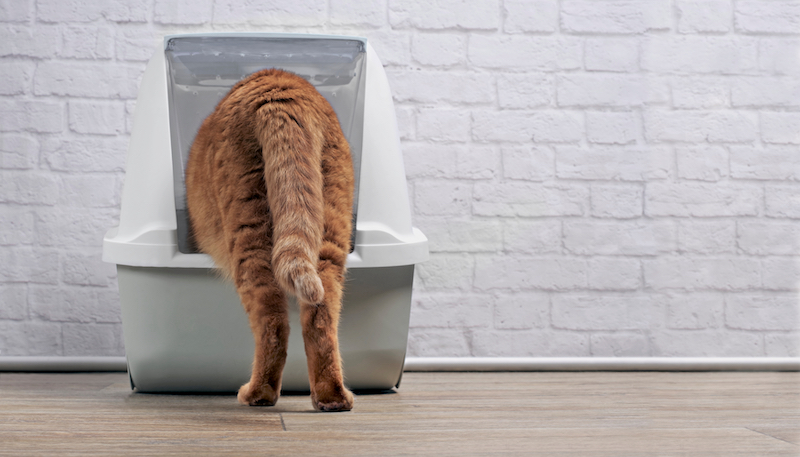Many cats require immediate medical intervention to alleviate the symptoms of a urinary tract infection (UTI). We pulled real world numbers based on how much Lemonade Pet parents claim for UTIs*, and found that, as of January 2025, cat UTI treatment ranges from $1,700 to $3,600
Urinary tract infections are often the result of bacterial growth in the urethra or bladder. UTIs in both male and female cats can be serious—especially if they develop into urinary blockage, which can be life threatening.
It’s crucial for pet parents to understand the signs and available treatments to be mentally (and financially) prepared.
What is a UTI in cats?
A urinary tract infection in cats, often abbreviated as UTI, is a condition where bacteria gets into your cat’s urinary tract, leading to an infection in the bladder or the urethra—the tube that carries urine from the bladder out of the body.
This is a common issue in both male and female cats, affecting about 1% to 2% of cats during their lifetime. It’s more common in neutered males because they tend to have narrower urethras that can easily get obstructed.
But UTIs are just one potential cause of feline lower urinary tract disease (FLUTD)—the umbrella term for bladder and urethra issues in cats. These issues could be caused by things like a bacterial infection, bladder stones, or feline idiopathic cystitis (FIC).
In severe cases, these conditions can lead to a life-threatening situation known as a urinary blockage (aka urinary obstruction).
How can I prevent my cat from getting a UTI?
Preventing UTIs in cats revolves around promoting their urinary health, which means you should:
- Monitor your cat’s behavior around the litter box, which can help you detect early signs of potential urinary issues and treat them swiftly
- Encourage your kitty to drink water—always keeping fresh water available
- If your cat eats primarily dry food, consider switching to wet—which has higher moisture content—or giving your feline friend supplements that can help prevent certain types of UTIs. But always consult with your vet before making changes to your cat’s diet.
- Clean the litter box frequently to prevent bacterial growth
Keep in mind that it may not be possible to entirely prevent your cat from getting a UTI, as it can be influenced by lots of factors—including your cat’s age, underlying health conditions, and environmental stressors—which might be out of your control.
What are the symptoms of a cat UTI?

There are certain key symptoms that suggest your cat may be suffering from a UTI. If you notice any of these signs, seek medical attention ASAP:
- Frequent urination
- Inappropriate urination—like peeing outside of the litterbox
- Bloody urine
- Discomfort during urination—like excessive meowing
- Changes in behavior—like increased aggression or decrease in activity
Is a cat UTI an emergency?
A cat UTI can turn into an emergency if it results in a urinary blockage (sometimes referred to as urethral obstruction), especially in male cats.
Signs that the UTI has turned into a blockage include:
- Frequent attempts to urinate
- Discomfort or pain while urinating
- Producing only small amounts of urine, or no urine at all
- General signs of distress might indicate urinary blockage, which is considered a life-threatening condition that requires immediate veterinary attention.
How much does cat UTI treatment cost?
Based on Lemonade claims data, we found that pet parents spent $1,700 to $3,600 to treat their feline’s UTIs. However, it’s important to remember that the cost can vary widely depending on the severity of the infection, and the specific treatment required.
For example, basic treatment that includes things like urinalysis to diagnose the UTI, antibiotics for a bacterial infection, and pain medications may come out to approximately $183.
But if your cat requires a urinary catheter or surgery, or if they need diagnostic tests like bloodwork, X-rays, or a urine culture, the cost can climb towards the higher end of the range. For instance, Lemonade pet parents spent an average of approximately $1,600 on removing bladder stones (aka a cystotomy).
That’s a lot of medical jargon—and it adds up. Wondering how much each item may cost you? Here’s a breakdown of how much Lemonade pet parents spent on average for some line items you may expect on your invoice for a feline UTI.
| Line item | Average Cost |
|---|---|
| Urinalysis | $128 |
| Bloodwork | $198 |
| X-rays | $234 |
| Antibiotics | $60 |
| Pain medications | $35 |
| Cystotomy | $1,600 |
Keep in mind too that urinary issues may require additional ongoing expenses. If your cat is prescribed a lifetime diet of special urinary food, you could end up paying an additional $27 a month.
Please note: Prescription diets are not covered by Lemonade pet insurance.
Does pet insurance cover the cost of UTI treatment for cats?

Pet insurance plans often cover treatment for UTIs and other urinary issues, but it’s essential to review the details of your policy.
A basic Lemonade pet insurance policy will often cover the costs of your cat’s UTI treatment, including any medications, diagnostics, and surgeries they may need—minus your deductible and co-insurance. However, if your cat is put on a prescription diet to manage their urinary issues, that won’t be covered.
What if the UTI is a recurring or pre-existing condition?
Because UTIs can be a recurring condition for cats, your insurance policy will only cover UTI treatment if your cat shows no signs of a UTI on their pet medical record when you sign up for pet insurance, or during your policy’s waiting period.
For example, if your cat has an existing history of UTIs at the time of signing up, that would be considered a pre-existing condition. So if your cat later develops another UTI, your policy wouldn’t cover treatment for that new UTI.
However, if your cat was already insured before showing any signs of a UTI, Lemonade could help cover the costs of treatment for any UTIs that develop later. That’s why it’s so important to insure your cat before they actually need that insurance coverage.
You can sign your kitty up for a Lemonade policy from the time they’re two months old.
Wondering if pet insurance is worth it? Check out how much pet parents of cats have saved on vet bills by signing their fur baby up for pet insurance.
Before we go…
Hopefully your cat never gets a UTI, but it’s helpful to be prepared, just in case. Consider getting pet insurance for your cat, and putting money into a savings account that you’ll use just for emergency vet bills.
Taking steps to help prevent a UTI, like monitoring your cat’s litter box habits and always having fresh drinking water available, can help, too, and will hopefully help your cat achieve pinnacle urinary health and wellness.
*Lemonade Insurance conducted an analysis of claim data to determine the average costs associated with UTI’s in cats as of January, 2025. This analysis is based on Lemonade’s internal data and is meant for illustrative purposes only; costs may vary depending on individual circumstances.
A few quick words, because we <3 our lawyers: This post is general in nature, and any statement in it doesn’t alter the terms, conditions, exclusions, or limitations of policies issued by Lemonade, which differ according to your state of residence. You’re encouraged to discuss your specific circumstances with your own professional advisors. The purpose of this post is merely to provide you with info and insights you can use to make such discussions more productive! Naturally, all comments by, or references to, third parties represent their own views, and Lemonade assumes no responsibility for them. Coverage and discounts may not be available in all states.




